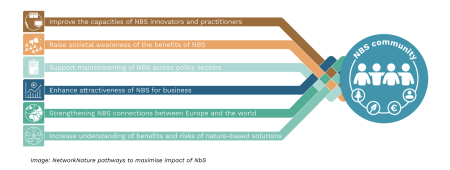Image:

Resource description:
Understand the key aspects of ecosystem restoration, why it is important, and how it contributes to biodiversity. This report details how to support ecosystem restoration and provides a policy perspective on how ecosystem restoration supports reaching the objectives of international agreements.
Author/Contact:
Publication date:
Uses of this resource:
This report is an introductory guide into ecosystem restoration and it's impact on biodiversity. It includes the following sections:
Contents
Introduction -1
Why - 2
How - 3
Policy Frame - 4
References - 5
Partners:
This project has been funded by EU Horizon Project. Grant agreement ID: 887396.
Licence:
- Free, no licence
Resource link:
Resource download:
- NN S2 Concept Report.pdf (13.67 MB)

